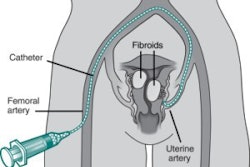Thieme, New York, 2002, $149
This volume was conceived as an introductory text to vascular and interventional radiology, its 480 pages designed for reading during the course of a typical residency rotation. The result is a successful addition to the small, but growing, library of books, which survey the breadth of this ever-changing specialty. As the authors note, its content is intended to interest a varied audience, ranging from radiologic technologists and nurses to general radiologists and IR fellows.
The book is divided into two major subsections. Part one consists of thirteen chapters that address basic principles and technique. These chapters offer good discussions of basic equipment, including useful details about the construction of catheters, guidewires, and biopsy needles.
Standard procedures such as vascular recanalization, transcatheter embolization, percutaneous abscess drainage and gastrointestinal access are discussed at length. Noninvasive evaluation of peripheral vascular disease, and a review of patient sedation, is addressed separately. A primer on techniques of MR and CT angiography is chock-a-block full of key information.
Part two consists of short chapters dedicated to the application of both vascular and nonvascular interventional techniques throughout the body. Along with chapters on classic topics such as angiography, TIPS, biliary work and venous access, there are chapters on pudendal arteriography; varicocele and female infertility treatment; gastrointestinal stricture management; and endocrine venous sampling.
However, certain topics remain uncovered. The chapter on carotid, vertebral, and spinal arteriography is cursory, and cerebral angiography is not discussed. Chemoembolization is addressed at length, but percutaneous radiofrequency ablation is not. Airway stents are omitted.
As the preface states, each chapter was written as an individual monograph, often by a team of a resident and attending physician. As a result, there is no global style that unifies the book. Nonetheless, each chapter is well written, with numerous references to guide further reading. Radiographs and drawn illustrations are liberally used to illustrate the text, and the quality of both is uniformly excellent. The index is serviceable.
Vascular and Interventional Radiology: Principles and Practice is more an introductory than exhaustive text, providing a good range of diagnostic and therapeutic options available in the modern interventional radiology department. This is a satisfactory overview of the tools and techniques of this exciting specialty.
Dr. Raymond H. ThorntonAuntMinnie.com contributing writer
April 15, 2003
Dr. Thornton is chief resident, department of radiology, at the University of California, San Francisco. He will be a fellow in vascular and interventional radiology at UCSF in July 2003.
Related Reading
Interventional Radiology Essentials, June 26, 2001
If you are interested in reviewing books, let us know at [email protected].
The opinions expressed in this review are those of the author, and do not necessarily reflect the views of AuntMinnie.com.
Copyright © 2003 AuntMinnie.com



















